Switch to the mobile version of this page.
Vermont's Independent Voice
- News
- Arts+Culture
- Home+Design
- Food
- Cannabis
- Music
- On Screen
- Events
- Jobs
- Obituaries
- Classifieds
- Personals
Browse News
Departments
Browse Arts + Culture
View All
local resources
Browse Food + Drink
View All
Browse Cannabis
View All
-
Culture

'Cannasations' Podcaster Kris Brown Aims to 'Humanize'…
-
True 802

A Burlington Cannabis Shop Plans to Host…
-
Business

Judge Tosses Burlington Cannabiz Owner's Lawsuit
-
Health + Fitness

Vermont's Cannabis Nurse Hotline Answers Health Questions…
-
Business

Waterbury Couple Buy Rare Vermont Cannabis License
Browse Music
View All
Browse On Screen
Browse Events
View All
Quick Links
Browse Classifieds
Browse Personals
-

If you're looking for "I Spys," dating or LTRs, this is your scene.
View Profiles
Special Reports
Pubs+More
How Far Along? How Vermont Delivers Help for Pregnant Women With Opioid-Use Disorder
Published August 21, 2019 at 10:00 a.m.
Until she died last year, my youngest sister, Madelyn Linsenmeir, was sick for most of her adult life with a chronic, relapsing disease: opioid-use disorder. Not that you would have known it if you met her when she was well. Maddie was girl-next-door pretty, with a freckled face and wide smile, and the openhearted exuberance she portrayed to the world when she was sober belied how much she struggled.
But while her addiction and the trauma she'd experienced as a result of it might not be outwardly visible, they were always there, waiting. Just when she was sober and safe, they would reemerge from the shadows, dragging her away from her family and holding her hostage in the darkest of places.
She had recently escaped one of those places when she fell in love with a man she met at rehab in early 2014. The two of them moved in together and got jobs at a property management company — he was a handyman; she cleaned rental properties. Maddie would proudly text me pictures of their new apartment, a little one bedroom in Keene, N.H., that our mom helped them furnish at garage sales and Goodwill. Things seemed to be going well, until they weren't, a pattern that was no less terrifying for its familiarity.
Maddie and her boyfriend, D., lost their jobs and apartment after a dispute with their landlord, who was also their employer. They moved back to Vermont and in with my mom in St. Albans; Maddie got a job waiting tables, but D., who had a felony conviction, had a difficult time finding work. My mother suspected they had relapsed when she noticed personal checks missing; when Maddie and D. stole her credit card, she made them a list of resources where they could find help, paid for a week's stay at a South Burlington motel and asked them to leave. A week later, they were homeless, crashing with friends and acquaintances when they could, sleeping outside when they had nowhere else to go.
My mom still paid for Maddie's phone, which I called or texted every day, but she never answered or wrote back. I scrambled to pick up when I got a call one afternoon from her number, but she'd pocket-dialed me. Hungry for the sound of her voice, I stayed on the line and listened: She was telling someone her car had broken down and she needed money to pay a mechanic so she could drive home, a scam to get money to pay for drugs. Soon after, my sister Maura saw a note posted on an online neighborhood forum describing and warning of the con.
One day Maddie called my mom and asked for the sneakers she'd left behind when she moved out. My mom met her in the parking lot of a downtown Burlington grocery store — Maddie had shoplifted there in the past and wasn't allowed inside. Her feet were swollen, blistered and bloody from wearing now-too-small shoes; my mom knelt on the pavement and cleaned them using hand wipes she'd found in her car.
My mom cried when she called to tell me about the encounter. "I think she's going to die," she said. "I think she wants to die." We had despaired for my sister many times before, been scared not just of what was happening to her but by our own helplessness to stop it.
But this time was different: Maddie was five months pregnant.
I set out to write a story about the impact of the opioid epidemic on Vermont families with children, a topic I thought could be distilled into some essential facts and anecdotes and arranged to form a clear picture, a story I thought might help me understand what happened to my sister.
But what families experience is varied, complex and rarely just about opioid use. In many cases it is inextricably intertwined with some combination of poverty or homelessness or trauma, with poly-substance abuse or mental illness or domestic violence, with lack of transportation or lack of economic opportunity or lack of services. These families' lives are overseen by and intimately involved with a system so elaborate and opaque, after months of research I'm not sure I have a realistic understanding of its most basic workings.
I can't offer you a clear picture of what happened to my own family, let alone what this thing we call the opioid epidemic means in general for families with children, or all the ways in which we as individuals, communities, organizations and state entities are supporting and failing them.
What I can do is pick up a few pieces of this puzzle and hold them up for you to see. What I can do is begin at the beginning: pregnancy.
"It's such an isolating space," Skyler Browder told me about being pregnant and using drugs. "It's the culture that we live in. Moms are held to this certain standard, and if you don't live up to that, the shame that comes with that and the judgment — it's a lot."
Skyler spoke with me from her home on Long Island, N.Y., where the native Vermonter moved two years ago with her son, Cree, who is now 5 years old. These days, Skyler meets that cultural standard for moms: She has a full-time job. Cree is about to start kindergarten. When I called, they had just walked in the door from grocery shopping. "We do not throw baseballs in the house," she gently admonished her son at one point during our conversation. At another she promised to tell him a story when she got off the phone.
But even five years into sobriety, the 29-year-old mom doesn't like to tell doctors she is in recovery from substance-use disorder, or that she used drugs while pregnant with her son. "It's just hard," she said. "There are medical professionals that still think addiction is not a disease."
It was this fear of being judged and her own "shame and guilt and embarrassment" that prevented her from getting help when she relapsed into heroin use while six months pregnant with Cree. "I stopped going to the doctor," she said.
This stigma is not something people with opioid-use disorder imagine or invent; it is so pervasive in health care, the American Medical Association Opioid Task Force made "removing stigma" one of six actions physicians could take to help end the opioid epidemic. Everyone I interviewed for this story identified it as the biggest barrier between pregnant women and treatment and prenatal care.
"Frequently our families are no stranger to being judged," said Susan White, a family nurse practitioner at the University of Vermont Medical Center's Neonatal Medical and Development Follow-up Program, a specialty practice that cares for babies who were exposed to opioids. "They're no stranger to seeing an awful lot of unkind care delivery."
Another significant barrier for women, according to White, is misinformation.
A week after my mom brought Maddie her sneakers, she and D. sat on a curb outside the UVM Medical Center. It was a beautiful fall day, and Maddie had her eyes closed against the sun on her face as D. tried to talk her into going inside. There was a rehab bed available in two days; in the meantime, our sister Maura had illegally bought Maddie buprenorphine, a prescription medication used to treat opioid-use disorder, on the street. The bupe would allow Maddie to stop using heroin without going through the intensely painful and sometimes dangerous process of opioid withdrawal.
But the pills weren't really buprenorphine, and Maddie had started to get dopesick. So instead of staying at Maura's the night before as planned, Maddie and D. stood in the rain outside the house of the dealer who sold Maura the bad pills, waiting for him to come home so they could demand that he replace them. It had been cold and rainy, the first night of the year Maura turned on the heat, and neither Maddie nor D. had coats. D. told me later that they walked around until 3 a.m. looking for a place to sleep. When he finally texted me the next morning, Maddie was detoxing. It was bad, he said; she needed help.
I picked them up in downtown Burlington and drove them up the hill to the UVM Medical Center, where hospital staff had promised she would be treated with medication to stop her from detoxing. But still she wouldn't go inside.
My family had initially discouraged Maddie from being on medication-assisted treatment like buprenorphine or methadone because we believed it was "bad for the baby." This shamefully incorrect advice most likely contributed to her relapse, and to her refusal to walk through those hospital doors. According to Marjorie Meyer, the vice chair of the UVM Medical Center's obstetrics program, it also isn't unusual.
The stigma and judgment pregnant women with opioid-use disorder experience is not just from the medical community but also misinformed loved ones who "pressure them to come off medication," Meyer said.
"There's no question that medication-assisted treatment is better for mom and better for baby," she said. It's also the standard of care recommended by the American College of Obstetricians and Gynecologists for pregnant women with opioid-use disorder.
Yet Maddie was convinced that if she went into the hospital, they would keep her there against her will and force her to detox. That if they knew she'd been using, even if she went into treatment, they would take her baby as soon as he was born. Maddie also had a fear so huge and twisted with shame, she couldn't bring herself to name it: She thought she had harmed her son.
The Comprehensive Obstetrics and Gynecological Specialty clinic at the UVM Medical Center, or COGS, got its start in 2006, when the hospital was the site of a national clinical trial studying the treatment of pregnant women with opioid-use disorder.
As the university recruited participants for the trial, "We realized the degree of unmet need was remarkable," said Meyer, who was involved in the study. "It was before there was a lot of buprenorphine prescribing going on in the state in general, and people weren't sure how to do it."
By working on the trial, Meyer said, she "ended up sort of by default developing this program where we started to prescribe buprenorphine in a clinic in pregnancy," one of the first of its kind in the country. She is now the clinic's director.
White works directly across the hall from the COGS clinic at what's referred to as "NeoMed," the neonatal medical clinic for babies who are exposed to opioids during pregnancy. It was founded in 2000 by Anne Johnston, a neonatologist who died earlier this summer.
Women with opioid-use disorder receive prenatal care through COGS and meet with White before their babies are born. Newborns who need medical intervention are cared for at NeoMed. But the two clinics work closely together and provide much more than just medical care.
A pregnancy in which the woman has opioid-use disorder "is not particularly high risk," said Meyer. "A lot of what they need is not so much medical; they need counseling, support, housing, food, transportation, a safe place. And they need treatment."
Skyler described COGS and NeoMed as just that: "a really safe space." She remembered going there for the first time when she was eight months pregnant, not for her own prenatal care — she was still using — but with a friend who was a patient and had an appointment with White.
"She's not one of us," Skyler said about White, meaning White doesn't have substance-use disorder, "and it's really hard for people who aren't one of us to understand this disease and the way it makes you work. Even if they try to, you can always feel this little bit of judgment. Susan is unique in that she got it. She wasn't an addict, but she got it. It just felt safe and OK."
Soon after Skyler visited the clinic with her friend, she became a patient herself.
What she got there "wasn't medical," she said. "It was literally, we would go in and just talk." White never rushed her or cut her off, and she asked Skyler questions about not just her health but her life. Most importantly, Skyler said, White listened.
"That's so huge when you feel like nobody understands you, to have somebody that's willing to sit down and talk to you, and not for the bullshit that you hear in so many treatment programs: 'Oh, are you using your methadone correctly? Here's some cognitive behavioral therapy.' Susan has this ability to just make you feel important," Skyler said, "even if you are literally unemployed and not doing anything, to just make you feel like you matter."
That safe space and her relationship with White allowed Skyler to get "honest for the first time about what was really happening to me," and 12 days before her son was born, she finally stopped using completely.
Although White herself can't be replicated, other services provided by COGS and NeoMed can. There is a dedicated nurse to help administer medication-assisted treatment; a social worker who makes sure women's basic needs — housing, clothing, food — are met and connects them to services; and a counselor — "the vast majority of moms have had trauma of some sorts in their lives that needs to be addressed or at least supported," said White.
These can be provided "even at smaller hospitals," said Meyer, which has allowed them to develop what she described as "really excellent programs ... Pretty much every [Vermont] hospital that does deliveries now has ... an integrated program."
COGS and NeoMed see women in all stages of recovery, from those who began medication-assisted treatment after becoming pregnant to women who have been stable on MAT for years. And they also see women, like Maddie and Skyler, who relapse while pregnant.
"This is a disease process of relapsing, getting back up again, relapsing and getting back up again," White said. "That is the nature of this disease."
"We'll help anybody through it if they have tough spots," Meyer told me. "We're there to back them up if they need it."
I don't know what finally compelled Maddie to go inside the hospital that fall morning, but when she did she was given buprenorphine, and, as it took effect, she slowly returned to herself. She watched closely as the doctor performing an ultrasound pointed out the baby's foot and leg, his face and fist, the hot-red lines of the umbilical cord and his pulsing heart. The doctor told her there was no reason the baby shouldn't be born healthy. He might need to be weaned from the buprenorphine, but Maddie could stay with him the whole time, and then he should be like any other infant. The doctor's reassurance was as healing as the medication she'd been given, the combination of the two like pebbles dropped on the path showing her the way home.
The next day D. and I drove Maddie to rehab. When she finished the program several weeks later, she and D. lived with my sister Maura and her husband at their home in Essex. Maddie got a job at Dunkin' Donuts, stayed stable on MAT and received prenatal care at COGS. At night my sisters and their partners watched TV together while Maddie and Maura washed and folded the secondhand baby clothes Maura had bought in preparation for the baby's arrival.
I lived in Philadelphia at the time, and Maddie would send me photos of her growing belly. "We play hide-and-seek," she told me over the phone, describing how the baby would push a hand or foot against her and she would place her hand on her belly and gently press back, so they were touching each other through her skin. Then his hand or foot would disappear and seconds later reappear in a different spot, pushing against her from the inside, and she would again find his hand with hers and return the pressure.
"She was so hopeful and seemed like she was doing so well," Maura told me recently. "I felt like maybe there was a chance for her and that baby."
Both COGS and NeoMed participate in CHARM, a Chittenden County collaborative of service providers who coordinate care for pregnant women with opioid-use disorder. Formally established in 2003, CHARM, an acronym for Children and Recovering Mothers, is the evolution of an informal network of health care providers, state agencies and nonprofits that had been working together for several years to help pregnant women with opioid-use disorder at a time when treatment options were scarce.
Today, representatives of 10 member organizations meet monthly to identify the needs of their clients and find ways to meet those needs. In addition to COGS and NeoMed, members of the collaborative include the Chittenden Clinic, the state's largest outpatient provider of medication-assisted treatment; Lund, a Burlington-based family support agency; and the Vermont departments of health and corrections.
"We can sometimes come up with solutions that, independently, each of these service providers can't necessarily do," said Sally Borden, CHARM’s facilitator and executive director of a nonprofit called KidSafe Collaborative.
This includes solving concrete problems — for example, providing a gas card to a woman who can't afford fuel to drive to appointments — and addressing more intangible ones, like the stigma and shame that are barriers to women getting care. The group also tries to mitigate one of the women's greatest fears, the "they" Maddie was afraid would take her son: the Department for Children and Families.
The No. 1 fear of pregnant women with opioid-use disorder, according to Borden, is that "'DCF is going to take my baby.'"
After some internal debate about whether the state agency should be part of the collaborative, DCF joined.
"We brought DCF to the table ... so we could have appropriate conversations about what moms need for support, what moms don't, and really very much with a goal of helping women who want to parent achieve that goal," said Meyer.
"We would never do something that wasn't in the best interest of the baby," she added, "but as you might imagine, it's generally in the best interests of the baby to be with Mom."
Vermont law and collaborations like CHARM (there are now several across the state) enable DCF to be involved with pregnant moms with opioid-use disorder and their newborns in a way "that's much more humane and appropriate than most other places in the country," said Borden.
According to the national Guttmacher Institute, 23 states consider substance use during pregnancy to be child abuse; three consider it grounds for civilly committing pregnant women.
"Some states open a child welfare case for every substance-exposed newborn," said Borden, even if the substance was the mother's prescribed methadone. "Vermont doesn't do that."
"It's a good state to be in, in that regard," said Meyer, "because, as a provider, if you knew everything was going to be punitive, it would put us in a very difficult spot."
Furthermore, according to Borden, Vermont is the only state that will open a child welfare assessment before an infant is born. This, she said, enables DCF to identify concerns and help moms address them earlier. As a result of the assessment, mothers might be referred to residential treatment, or DCF caseworkers can provide supportive services. This is not, however, a guarantee DCF won't open a case or move for custody once the baby is born.
Twenty-nine percent of the 417 prenatal assessments DCF has opened since 2016 resulted in the state filing for custody of the children after they were born. But even in this circumstance, Borden points out, the prenatal assessment allows the mother to plan — is there a relative who can care for the baby? — and prevents the birth from being a moment of crisis, when DCF moves in without warning.
This approach helps with what White described as one of her goals for women: making the experience of having a baby "more about the joy of birth."
The Vermont Department of Health reports that the number of newborns in the state exposed to opioids is five times the national average. In 2012, the last year for which there is data, that was 31.7 per 1,000 Vermont babies.
While this is an alarming number, the rates of opioid use and overdose in the state that same year were in line with national averages; the Vermont Department of Health suggests the higher rate of opioid-exposed infants may be attributed not to more women in Vermont using opioids while pregnant but rather a greater level of awareness of opioid-use disorder among health care providers and access to treatment in the state.
The majority of those opioid-exposed babies, four out of five in 2010, were born to women who, like Maddie and Skyler, were in treatment when they gave birth. The Vermont Department of Health speculates that this number is even higher now, again due to the increased availability and awareness of treatment in the state.
Yet I've heard people, including editors at this newspaper, call the children of women with opioid-use disorder "opioid babies" or "heroin babies," similar to the way the term "crack babies" was used in the 1980s and early '90s. When I mentioned this to Meyer, she warned she might get on "a big soapbox."
"We were wrong about the crack babies," she said (research indicates the outcomes for babies with prenatal exposure to cocaine fare far better than inflammatory headlines led people to believe), "and we're wrong about the way we think about these babies, too."
"We've been working against the misinformed idea that these babies are somehow less than or have had something happen to them," said White, who cares for newborns with neonatal abstinence syndrome. "The opiate exposure during pregnancy does not mean your child's going to have developmental outcomes that are poor."
Nationwide, more than half of babies exposed to opioids in utero experience neonatal abstinence syndrome, which is sometimes referred to as "withdrawal," a set of symptoms that include irritability, sweating and tremors.
At the UVM Medical Center, babies born with opioids in their system stay with their moms in the hospital for a minimum of four days, during which time they're monitored for neonatal abstinence syndrome and moved to the intensive care unit if there is concern about their symptoms. But only 25 percent of babies who experience neonatal abstinence syndrome require medicine to treat it; most can be cared for with methods such as swaddling, low lighting and breastfeeding.
This was the case for Maddie's son when he was born — he experienced symptoms of neonatal abstinence syndrome but didn't need medication to treat it. Skyler's son, Cree, on the other hand, required methadone, the same medication Skyler was taking, which she slowly weaned him from when he came home from the hospital.
"It felt awful and embarrassing," she said. "It's this feeling of, I've failed before I've even started." But even newborns like Cree who do require medical intervention have good outcomes. According to White, those babies at the UVM Medical Center score above the 50th percentile on most standardized developmental assessments when they are 1 year old.
Nonetheless, the stigma is entrenched, as is the guilt for moms. Cree, a healthy 5-year-old, has "some behavioral stuff," as Skyler put it, and she wonders if this is because she used while she was pregnant. "People that eat organic food and never take an aspirin have kids that have behavior issues, or worse," she acknowledged. "But I think any parent, regardless of whether or not you're an addict, has this feeling of, Did that aspirin I take cause this? Did that shot of heroin that I took cause this? Because of the stigma of addiction, it's extra taxing."
Abigail Crocker, a biostatistician and assistant professor in the math and statistics department at UVM, wanted to understand the impact of prenatal opioid exposure as babies grow up. She had been working with Meyer and Johnston at COGS and NeoMed since 2006 to analyze data around pregnancy and delivery outcomes, and they knew that their opioid-exposed babies were "born by and large very healthy," Crocker said.
But they kept hearing anecdotes about how these kids were showing up in school systems with issues that required extra resources. Crocker wanted to know: "Is it these babies in particular?"
She took the list of opioid-exposed babies whose mothers received treatment through COGS and, in partnership with the Vermont Agency of Education, merged the kids' health records with their education records. She was looking at standardized test scores and individualized education plans (IEPs), through which services are provided to students for everything from learning and physical disabilities to emotional disorders.
"You would think that if these kids were doing so much worse than their peers, they'd be high IEP utilizers and have horrible standardized test scores," she explained. "That's not what we found."
Opioid-exposed children whose moms were in treatment when they were born were not more likely to have an IEP or do poorly on standardized tests, she discovered.
Crocker pointed out that this was not a study on how active substance-use disorder affects a family or children at school. "That is challenging," she said. "But it's not the opioid exposure that a baby has in utero" that's impacting kids later on.
This is the good news. While they are pregnant, Vermont women with opioid-use disorder are wrapped in layers of attention and services and care, which have positive outcomes for their infants.
But women with infants still need the counseling, housing, food, transportation, safe place and treatment Meyer described as required for pregnant women. The bad news is that, for most women, those supports peel away or become harder to access once their babies are born.
"I would like to say that we provide really wonderful wraparound services for every mom and family," said Borden. "But we know that's just not the case."
"That's one of the things I worry the most about," said Meyer. The women she treats "do pretty well in pregnancy, but we have to figure out this after part."
Women at COGS are transitioned to a medication-assisted treatment provider or clinic before they leave, but the obstacles to getting there can be insurmountable for a new mom.
"It's very difficult for patients who now have not just one kid, maybe they have two or three kids, and need to take two buses to get to their doctor's office," said Meyer. "And by the way, [they] don't have any childcare. And by the way, [they] don't have a lot of money. And by the way, [they] might have to meet with the Department of Corrections, and [they] have to meet with this other person. Treatment is available to them, but it becomes such a barrier that they don't go.
"Some of these women's schedules, if you gave it to me, I'd be like, 'Whoa, I don't know how I could do all that,'" Meyer told me, a sentiment echoed by many professionals I spoke with who work with mothers with opioid-use disorder.
"You have no idea what is asked of these women," said Maria Noyes, who runs the Doula Project at Washington County Mental Health Services. "I'm a middle-class person with young children. When I see what people have to do who are in treatment and in poverty, I just think, Oh, my god, no one would ever ask me to do that."
When I asked her to explain, she gave me an example: In addition to "the logistics of getting to appointments when there's no transportation," which is the norm for many of the Washington County women she works with, if a new mom is homeless, she might have to go to a state office to get a voucher and spend "God knows how long with a 4-day-old baby with hundreds of people in and out in this public place," said Noyes.
She contrasted what these women experience to the messages she received when she had her babies, which she said were "all about connection and support." For many of the women she works with, she said, "It's like, because they're in poverty they need to be stripped of their dignity."
Maddie and D.'s son, Ayden, was born almost two months prematurely and was in the neonatal intensive care unit at the UVM Medical Center for three weeks. Maddie spent every day with him there, and when he was finally able to leave the hospital, she and D. took him home to my mom's apartment in St. Albans.
My sister was in love with her son, and parenting revealed something in her I'd never seen before. She was the youngest sibling by more than a decade and had used substances since she was a teenager; as a result, she had spent her whole life, for better or worse, as the center of attention — doted on, bossed around, worried about.
When she had Ayden, I saw my 26-year-old sister for the first time as a grown-up. When I held him she would gently adjust him in my arms or confidently instruct me on how to burp him. When she spoke his name, it sounded like the notes of a song.
But she was anxious, too, in some of the ways many new moms are — about being responsible for this tiny human being, about breastfeeding and whether he was getting enough to eat.
Unlike many new moms, she had to travel 60 miles round trip between St. Albans and Burlington for medication-assisted treatment. She didn't have a car, so she was dependent on my mom to drive her. She and D. were trying to find a place of their own and had even saved enough money for a deposit and first month's rent, but they couldn't find anyone willing to rent to them. Maddie had experienced grave trauma as a result of her addiction that she wasn't addressing. And Ayden had been diagnosed with a congenital condition that doctors said could have a significant impact on his life or none at all; it might not be clear for years.
But, in other ways, Maddie was incredibly lucky. She had a safe place to live, a refrigerator and cupboards stocked with groceries, and those rides from my mom. Maura had procured everything a new baby would need, from clothes to a crib to a nursing pillow. Ayden was safe and thriving. My mom, who had been planning to buy her own place when she retired, purchased a house that would work for her later that she could rent to Maddie and D. right away. When Ayden was 3 months old, they moved into a two-bedroom ranch in Burlington's New North End.
Skyler was lucky, as well. A week and a half before Cree was born, she moved into Lund, a residential treatment center in Burlington where moms with substance-use disorder can live with their kids. It's the only place of its kind in Vermont and virtually always has a waiting list. Women can't go there with children older than 5, and they can't bring their partners if they're in a relationship, even if it's the child's father. Skyler and Cree lived there for 14 months.
Skyler tapered off methadone and regularly attended 12-step meetings, started taking classes at the Community College of Vermont and finally faced what she called "the really simple tasks that when you're in the midst of addiction you don't deal with," like getting her driver's license back.
She said Lund gave her a "solid foundation" to build a life on, but she credits COGS and NeoMed for where she is today.
"It's about relating to people on a human level, something that we really don't see a lot of in Western medicine," she said about the UVM Medical Center clinics where she finally "got honest" about using while pregnant. "There's not a lot of spaces where you can feel comfortable opening up about that."
Even now, she doesn't like talking about using drugs while pregnant; she shares her story because she wants women in similar circumstances to know: "You're not alone."
When Ayden was 6 months old, Maddie called me sobbing. "I feel like I can't breathe," she wailed, and she was crying so hard I thought she really might stop breathing. She had relapsed and tried to falsify and failed drug tests at the clinic where she received medication-assisted treatment, which reported her to DCF.
Ayden could have remained at home if D. was sober, but D. refused to take a drug test to confirm as much. The baby also could have stayed with a family member, but my mom had to work and DCF couldn't provide childcare. No one notified Maura or me of what was happening, so Ayden was placed with a foster family. As soon as we learned he was there, Maura and her husband started the process to foster him themselves.
Three days later she texted me from the DCF parking lot. "The eagle has landed," Maura wrote, and sent a photo of Ayden in the back seat of her car.
We know now that the chubby baby in that photo would transform into a lanky little boy, that his fine brown hair would become a crown of thick curls, and the plump cheeks we loved to nibble on would narrow to resemble his mom's. We know now that he, his parents, and his aunt and his uncle had just entered a labyrinthine system from which they would not emerge for more than two years.
Introducing: All Our Hearts
Lost a loved one who struggled with opioid-use disorder? You are not alone. Please consider submitting a story to All Our Hearts, Seven Days' new online memorial project. When launched later this year, the website will document the lives of those who are no longer with us and the people they touched.
We want your story to be part of it. As Kate O'Neill's "Hooked" series has shown, these remembrances can educate, change minds, awaken empathy — and inspire action.
To add to this project, visit sevendaysvt.com/allourhearts and fill out the submission form. It includes a mix of questions and prompts designed to help you describe your loved one. The page also includes our first few entries, to demonstrate the project vision.
All Our Hearts was inspired by the overwhelming public reaction to O'Neill's obituary for her sister, Madelyn Linsenmeir; the name comes from the text of the obituary itself. As O'Neill wrote: "If you yourself are struggling from addiction, know that every breath is a fresh start. Know that hundreds of thousands of families who have lost someone to this disease are praying and rooting for you. Know that we believe with all our hearts that you can and will make it. It is never too late."
The original print version of this article was headlined "How Far Along? | Vermont delivers help for pregnant women with opioid-use disorder. But giving birth is just the beginning."
Need Help?
If you or someone you love are suffering from opioid use disorder and need treatment and support resources, here's how to get connected:
- In Vermont: Call 2-1-1, a free and confidential resource hotline provided by the United Way of Vermont.
- Outside Vermont: Call 1-800-662-HELP, a free, confidential 24-hour hotline run by the Substance Abuse and Mental Health Services Administration.

"Hooked: Stories and Solutions From Vermont's Opioid Epidemic" is made possible in part by funding from the Vermont Community Foundation, the University of Vermont Health Network and Pomerleau Real Estate. The series is reported and edited by Seven Days news staff; underwriters have no influence on the content.
Have a tip or a story to share about opioid addiction in Vermont?
Email our news editors at [email protected] or call 802-864-5684.
Got something to say?
Send a letter to the editor
and we'll publish your feedback in print!
Tags: Opioid Crisis, Hooked, opioid addiction, pregnancy
About The Author

Kate O'Neill
Bio:
In “Hooked: Stories and Solutions from Vermont’s Opioid Crisis,” writer Kate O’Neill explores the state’s opioid epidemic and efforts to address it using traditional journalism, narrative storytelling and her own experiences. Her sister, Madelyn Linsenmeir, died in October 2018 after years battling opioid addiction.
In “Hooked: Stories and Solutions from Vermont’s Opioid Crisis,” writer Kate O’Neill explores the state’s opioid epidemic and efforts to address it using traditional journalism, narrative storytelling and her own experiences. Her sister, Madelyn Linsenmeir, died in October 2018 after years battling opioid addiction.
More By This Author
Latest in Category
Speaking of...
-

'In This Together': A Doula and Birth Photographer Has Her Third Baby at Home
Mar 12, 2024 -

Vermont's Relapse: Efforts to Address Opioid Addiction Were Starting to Work. Then Potent New Street Drugs Arrived.
Jun 14, 2023 -

A Mental Health Agency in Washington County Provides Doula Services to Families — Free of Charge
Mar 1, 2023 -

Rise and Shine? A Food Writer Navigates a Nauseous First Trimester
Feb 28, 2023 -

Pro-Life Pregnancy Centers in Vermont Provide Misleading Information, Critics Charge
Jul 27, 2022 - More »






























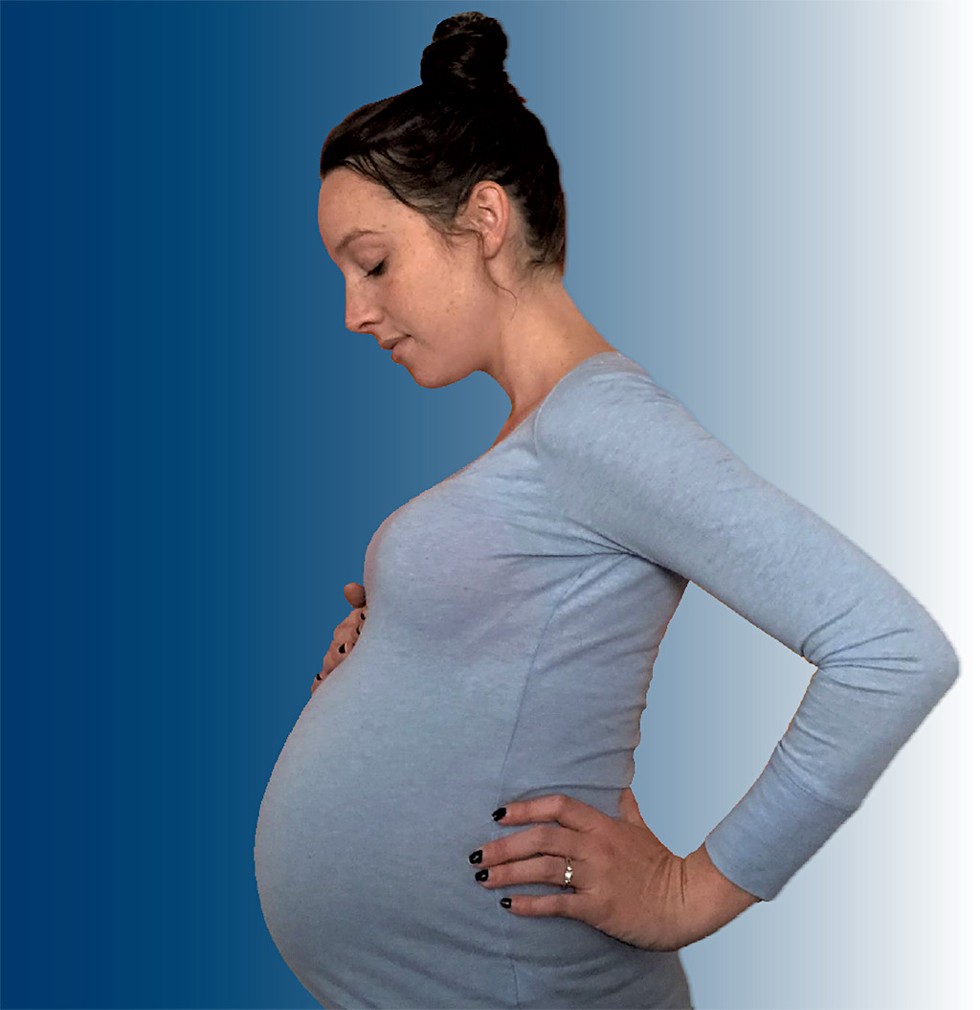

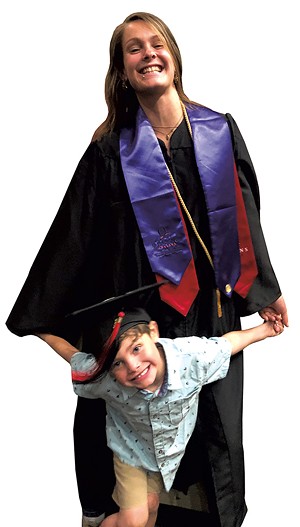
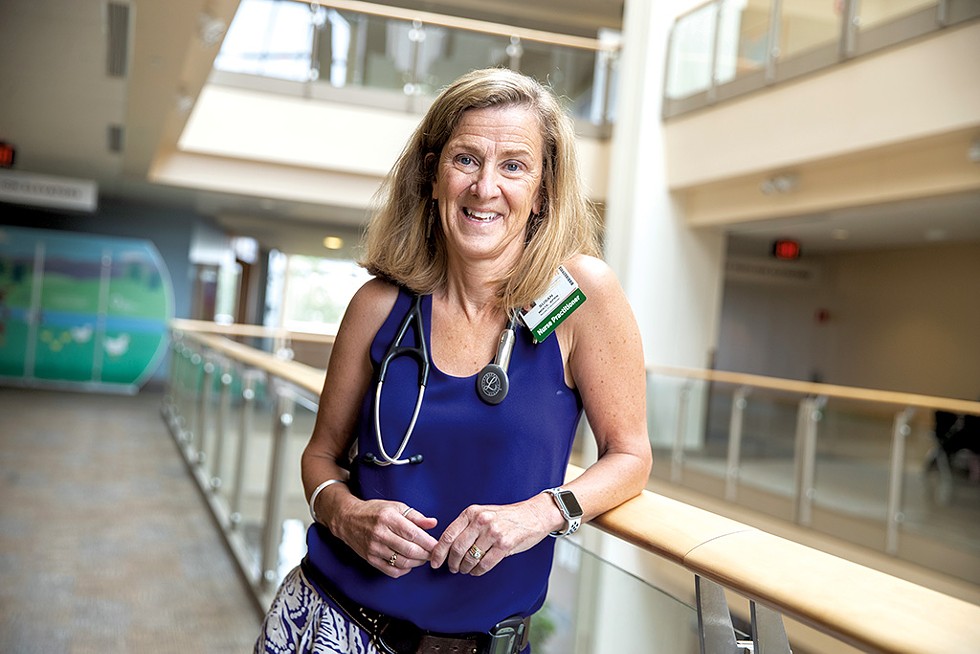
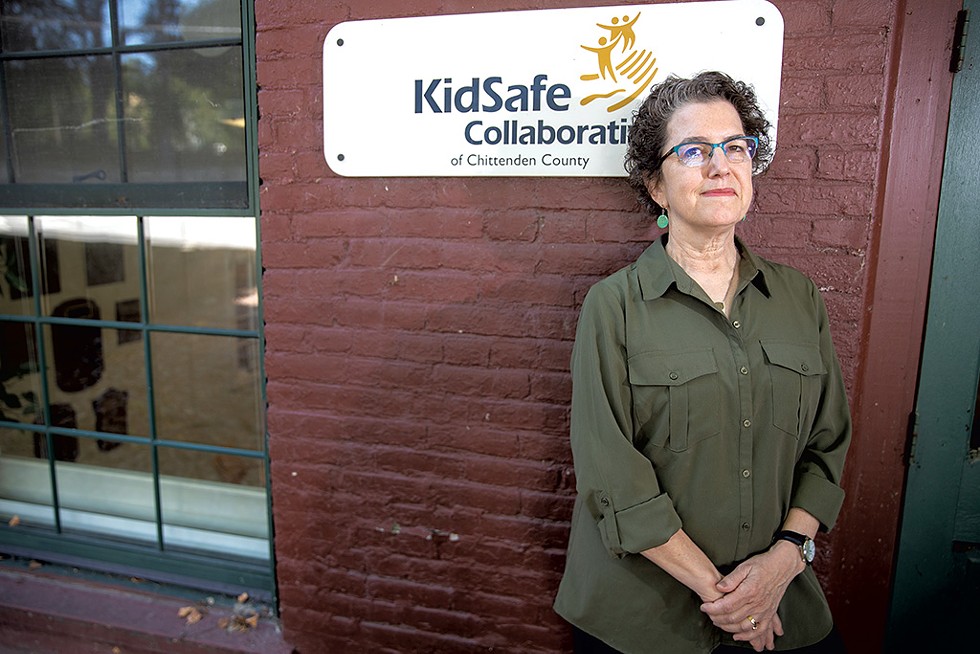
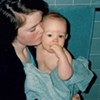
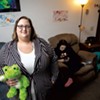
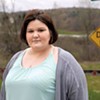



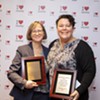





find, follow, fan us: